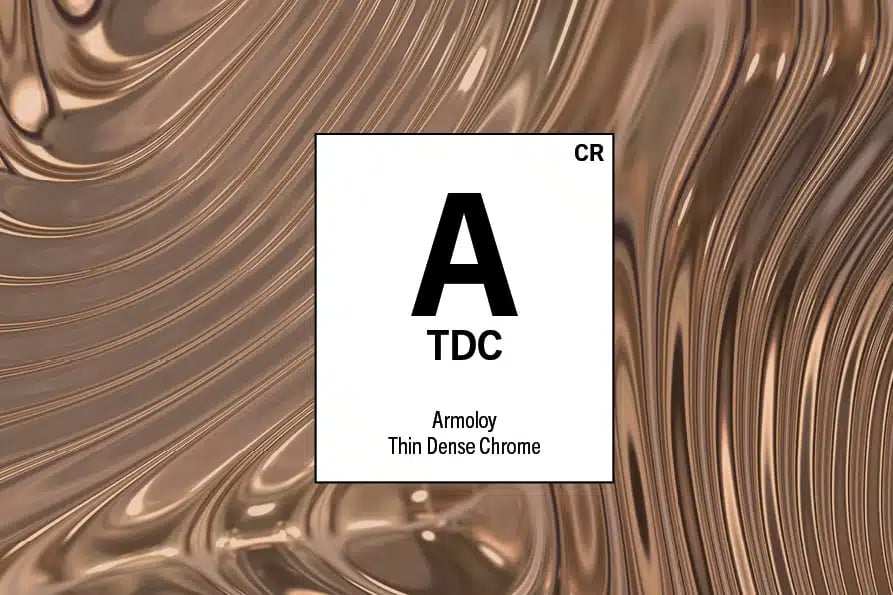
Chromium coatings are so effective at protecting metal surfaces that it is easy to take them for granted. However, were it not for the work of a doctoral student named George Sargent, we might still be using tools, devices, and equipment that are highly vulnerable to damage from corrosion, friction, and other destructive forces.
Sargent was a pioneer in the field of chromium deposition. A paper he published in 1920 is effectively the foundation of the processes and industry that soon developed and continue to this day.
Armoloy’s Advances in Chromium Coatings
Sargent’s work may have been the genesis of the chromium coatings companies apply today, but there were many advances in electroplating to come. Armoloy’s research engineers are proud to be behind several of them.
More than 60 years ago, we developed Armoloy Thin Dense Chrome® (TDC). It is a precision chromium plating that can protect metal items even when applied with thicknesses as low as .000050. Why is the thinness of TDC beneficial to product designers, manufacturers, and other stakeholders? There are several reasons.
Perhaps the most important is that Armoloy TDC® can be applied to metal parts and products without adversely affecting their specifications or performance. So, whether electroplating is incorporated into a design or added later, when an uncoated item inevitably starts performing poorly, stakeholders have a much easier path to their functional goals for the item.
Impressive Armoloy TDC® Specs
This electrodeposited coating’s longevity as a go-to solution speaks to the extensive time and effort invested in developing its formula and the processes used to apply it. We carefully selected every characteristic based on our experience in a wide variety of projects for countless customers through the years.
The popularity of Armoloy TDC® is due, in part, to the fact that using a coating creates a composite material that has the best qualities of both substances. For instance, plating a copper injection mold gives you the excellent thermal characteristics of copper and the wear resistance of chromium. Another example is applying a coating to carbon steel. The result is an item with the machinability and low cost of carbon steel enhanced by chromium’s strength and durability.
Today, organizations that have us apply Armoloy TDC® to their metal items benefit from the following:
- Hardness up to 78 Rc
- Coefficient of friction as low as .12
- Corrosion resistance equivalent to 440C stainless steel
- Wear values exceeding 1.2 TWI limits established within AMS 2438
As a result, coated items experience significantly reduced friction, wear, and corrosion. This can lead to a 5x extension of item life and the associated cost savings. In addition, Armoloy TDC® is FDA compliant and has a blanket food safety approval from the USDA.

A Broad Spectrum of Applications
With its many desirable physical properties, it’s no surprise that Armoloy TDC® is used in many industries and applications, including:
- Machined components
- Food processing and packaging
- Oil and gas extraction
- Nuclear
- Pumps and compressors
- Aerospace
- Plastic injection molding
- Medical
It is effective with bearing steels such as 52100 and 8620, tool steels like S-7 and H-13, and cold roll, hot roll, high-carbon, and low-carbon steels. It can also protect cast iron, copper, bronze, and brass substrates.
Chromium Coatings: From Afterthought to Essential
It is common and understandable for design engineers to focus on the physical properties of substrates. Consequently, chromium electrodeposited coatings have historically been an afterthought in the design process. However, that view is changing.
Today, designers, engineers, and end-users are more likely to recognize the value of coatings—everything from improved performance to enhanced aesthetics. They are also increasingly aware that Armoloy TDC® is the foundation of what we refer to as the Big 7. These seven products have been developed with unique characteristics to address virtually any metal coating requirement.
And “have been developed” should more correctly be “continue to be developed” as we constantly push the boundaries of what chromium coatings can do and how they can benefit the companies we serve.